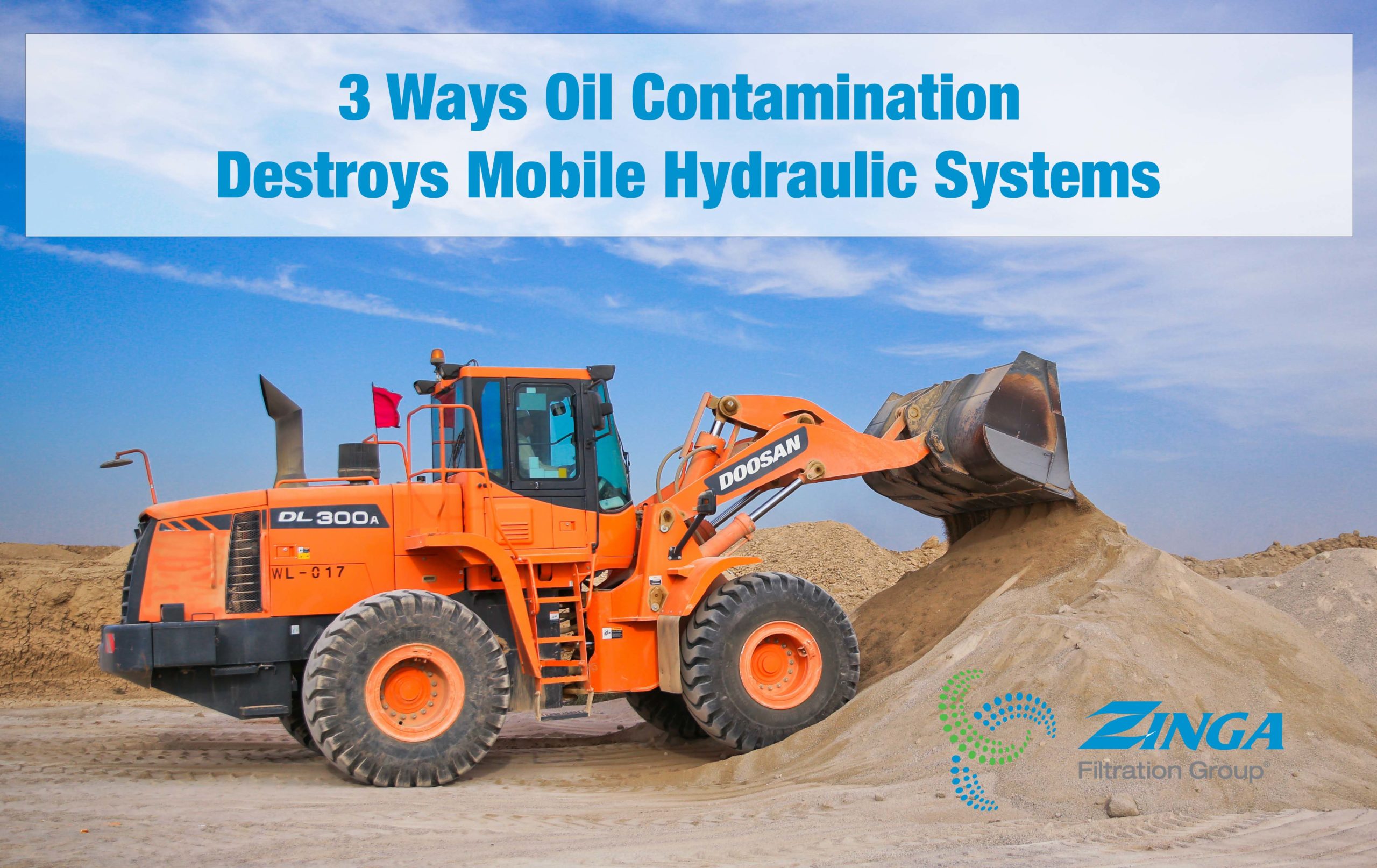3 Ways Oil Contamination Destroys Mobile Hydraulic Systems

The condition of your hydraulic oil plays a significant role in equipment performance. When it comes to maintaining healthy oil, your biggest enemy is contamination—in fact, contamination is the cause of approximately 90 percent of hydraulic system failures. Even the smallest of particles can wreak havoc on a hydraulic system’s components such as seals and servo valves. Before we discuss how lubricants become contaminated with particles, let’s get familiar with the different types of failure that can occur if you fail to keep contaminants out.
Degradation Failure
These include sluggish system operations, loss of system accuracy and system speed, system overheating, and inability to build full system pressures. Essentially the system is not running as it was designed to run. Degradation failures often go undetected until damage is irreversible. To prevent degradation failure, adequate filtration must be installed and maintained for the system.
Transient Failure
Transient failure is caused by particles that briefly interfere with a component’s function. Often, this type of failure happens sporadically and goes unnoticed, although the consequences will make themselves known with time. The particles lodge in a critical clearance between matching parts, only to be washed away during the next operation cycle. As a result, components become less predictable and thus unreliable.
Catastrophic Failure
This is the type of failure that will sneak up on you with no warning and is irreversible in nature. Though not always the cause of catastrophic failure, lubricant contamination is often the culprit. Large particles restrict moving parts, which, in turn, clogs the very tight passageways found in a hydraulic system. Once these passageways become clogged, the system won’t be able to run.
Sources of Contamination
Contamination can find its way into oil in a variety of ways, which is why a comprehensive contamination control program is a must. The most common sources of contamination are as follows.
Built-In Contamination
This type of contamination is especially difficult to avoid as it is the result of the manufacturing and assembly of the equipment. These particles include: casting sand, machining debris, weld spatters, paint, pipe sealers, and more. In addition to machine particles, the hydraulic oil itself will rarely meet cleanliness targets right off the bat. Remember: new oil does not necessarily mean clean oil. To dodge the harmful effects of built-in contamination, flush system components prior to assembly and filter new oil before use.
Ingressed Contamination
Mobile hydraulic systems are constantly being infiltrated with contaminants, especially in industries like construction and mining. This is where selecting the right filter for your application comes into play. Glass media filters are the most effective, providing the highest levels of depth filtration efficiency and capacity. Higher dirt holding capacity means longer service life.
Generated Contamination
Hard particles tend to generate more particles. This phenomenon is known as three-body abrasion and occurs when particles between two surfaces scrap material off one or both surfaces. Other processes like cavitation, corrosion, erosion, fatigue, and metallic contact between moving parts can also generate particles and build onto the contamination that is already present in the system. Although these issues are not always avoidable, their impact can be reduced by proper filtration.
Contamination Control Starts with Filter Selection
Hydraulic oil contamination is seemingly inevitable. To achieve reliable hydraulic system performance, it is important to implement a holistic contamination control program that includes a defensive machine design involving the right lubricant filter, routine maintenance, and a robust oil analysis program. Contact an expert at Zinga Filtration to learn which filter is best for your application so you can keep contaminants out and downtime at bay.
